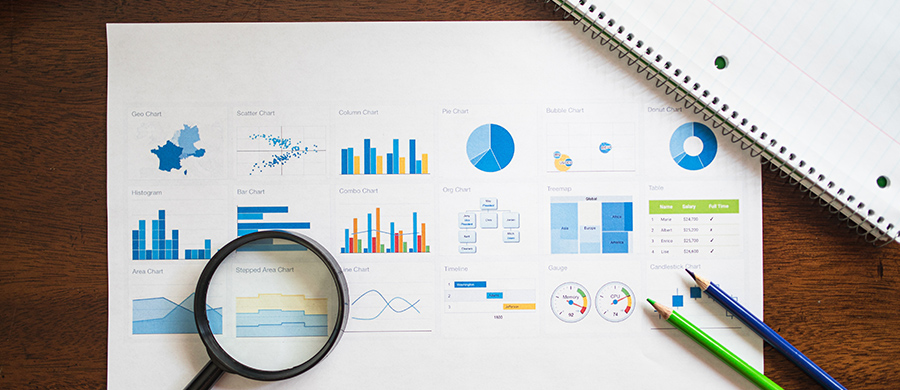Rethinking altmetrics and its possibilities
Subject: Multidisciplinary
Researcher Rodrigo Costas was at the UOC to present what's new on the horizon in terms of alternative metrics for scientific communication and academic journals.
On 8 April, the 9th UOC Scientific Publishing Seminar took place, a biannual discussion space that brings together the journal editorial teams and scientific communications professionals of the university.
On this occasion, the session was dedicated to exploring the potential of alternative metrics thanks to the contributions of the guest speaker, Rodrigo Costas, researcher in the altmetrics area of the Centre for Science and Technology Studies (CWTS), of Leiden University (Holland).
The Vice President for Strategic Planning and Research, Marta Aymerich, opened the seminar with a reminder of the results of the pilot test conducted to analyse the type of scientific dissemination and the attention that the results of the UOC's research received in the social networks. Although the application of alternative metrics in the assessment processes was discarded, it was concluded that these could be a tool with great potential for the dissemination of research in and outside of the academic area.
During his presentation, Rodrigo Costas remarked on several occasions that "altmetrics is much more than counting the tweets for papers" and presented new theoretical and analytical approaches to the interactions that are being forged between research and social networks.
What are altmetrics? A bridge between research and society
The concept of altmetrics was introduced with the altmetrics manifesto of 2010, based on the search for indicators that would serve as an alternative or complement to the traditional metrics of scientific output, which are mainly citation-based. This is when the impact of scientific output on the social web started to be analysed: How many times has an article been mentioned in Twitter, saved in Mendeley, quoted in Wikipedia or shared on Reddit? How is the content shared? And by whom?
Costas presented new contributions to the theoretical framework of altmetrics that go beyond the scientific article and also take the academic actors into consideration. The study "Interpreting ‘altmetrics’: viewing acts on social media through the lens of citation and social theories" presents them as a succession of interactions or engagements between the interested communities or agents (president, research staff, university, scientific journals) and the research objects, which, in addition to scientific articles, may include videos, blog entries or presentations, for example.
"Social media metrics for new research evaluation" goes one step further, arguing that altmetrics is not necessarily restricted to what happens with the academic output, but also includes what its agents do in the digital environments. Thus, any type of interaction between science and social media would be included in the altmetrics, such as, for example, a university president's activity on Twitter, a study about news of scientific disclosure in The Conversation portal or an analysis of the feelings about news related to COVID-19.
The big question: correlation between altmetrics and citations
The guest speaker dedicated part of the session to this question. Based on the results of the study "An extensive analysis of the presence of altmetric data for Web of Science publications across subject fields and research topics", it was concluded that no clear correlation exists between citations received by an article and social impact or altmetrics.
New possibilities of altmetrics
Rodrigo Costas argued that altmetrics bring with them new perspectives in research as well as in the communication of science. They can be applied, for example, for analysing the interest paid to a particular topic on social media, for studying the differences of interest in a topic in social media and the academic sphere, or for exploring the interactions around a topic according to geographic area.
In this map of topics, created with the free-of-charge app VOSviewer, it is possible to analyse the interest aroused in Twitter concerning the different aspects related to HIV. To expand upon this information, we recommend the article "Social media metrics for new research evaluation".

Altmetrics also make it possible to analyse the relationships and interactions between different social media agents (interested communities) to study the connections between them, to know their conversations via the hashtags, to discover new interest groups, observe the connections between academic journals, or keep up to date with new research topics that are generating interest.

In this image, we can see connections established between the scientific journals based on Twitter activity. To expand upon this information, we recommend the article "Social media metrics for new research evaluation".
What can altmetrics offer to the different agents?
- For communication, it makes it possible to monitor the impact of research in the social networks, to develop evidence-based dissemination strategies (use of hashtags, audiences, publics, etc.), to have more indicators for scientific communication (selection of subjects, coverage and presence in networks) or to give support to researchers to encourage the use of social networks.
- For scientific journals, altmetrics can help identify a journal's interested communities, the current hot topics or topics of interest, and strengthen a journal's presence in the social networks.
- For society in general, altmetrics create bridges between communication and the academic world.
Rodrigo Costas is a researcher with experience in the field of information science and scientometrics. Holding a PhD in Library and Information Science from the CSIC in Spain, he has been working in the Leiden University of Holland since 2009, where he coordinates various research projects for different scientific organizations worldwide. His lines of research include the development of new scientometric tools and indicators based on quantitative data for studying the dynamics of science. In his work, Rodrigo has paid special attention to analysing individual studies using scientometric methodologies. In the most recent ones, he has developed an extensive work on "altmetrics" particularly with a view to studying the interactions between science and society, and with a view to expanding the analytical possibilities of scientometrics.


